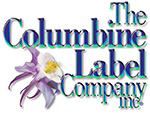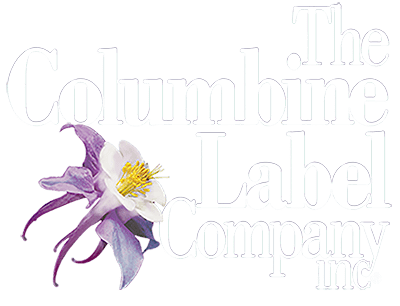Product labels play a critical role in conveying information, capturing attention, and influencing purchasing decisions. Whether you’re a small business owner or a large corporation, selecting the right label material for your products is a decision that shouldn’t be taken lightly. The material you choose can impact various aspects of your labels, including durability, appearance, and cost. In this blog, we’ll explore the various label material options available and help you determine which one is best suited for your specific products.
Understanding Label Material Options: Pros and Cons
When it comes to choosing the right material for your product labels, it’s essential to weigh the pros and cons of each option to make an informed decision. Here are the various label materials, along with their respective advantages and disadvantages:
-
Paper Labels:
Pros:
- Cost-effective and budget-friendly.
- Versatile, with various finish options (matte and gloss).
- Ideal for indoor applications.
Cons:
- Limited durability, susceptible to damage from moisture and rough handling.
- Not suitable for outdoor or harsh environmental conditions.
-
Vinyl Labels:
Pros:
- Exceptional durability, making them suitable for products exposed to moisture and rough handling.
- Available in various types, including white vinyl and static cling vinyl.
- Suitable for both indoor and outdoor applications.
Cons:
- Higher cost compared to most other label types.
- Limited design and finish options compared to some other materials.
- Most environmentally unfriendly, both in production and from a recyclability stand point
-
Polyester Labels:
Pros:
- Highly durable and resistant to harsh environmental conditions, including chemicals, UV rays, and extreme temperatures.
- Ideal for products that require long-lasting labels, such as industrial equipment and appliances.
- Available in various finishes, including matte, gloss, and silver.
Cons:
- Relatively higher cost compared to paper and vinyl labels.
- May be overkill for products with less demanding labeling needs.
-
BOPP Labels (Biaxially Oriented Polypropylene):
Pros:
- Excellent clarity, moisture resistance, and durability.
- Commonly used in the food and beverage industry for labeling products like bottled water, snack bags, and condiment containers.
- Available in transparent, white, and silver (chrome) options, with matte and gloss finishes.
Cons:
- Moderate cost, making them more expensive than paper labels.
-
Foil Labels:
More on Foil Labels
Pros:- Add an elegant and sophisticated touch to your products, ideal for high-end packaging and branding.
- Available in various metallic colors, including gold and silver.
- Perfect for creating a luxurious appearance.
Cons:
- Less durable than some other materials, making them unsuitable for products that will endure rough handling or harsh conditions.
- Higher cost compared to many other label materials.
By considering the advantages and disadvantages of each label material, you can make an informed choice that aligns with your product’s specific needs, budget constraints, and the image you want to project to your customers.
Consider the Following Factors
To determine which label material is best suited for your specific products, you should consider the following factors:
-
Application Environment:
- Where will your products be used or stored? Consider factors like temperature, humidity, exposure to water or chemicals, and UV radiation. This will help you select a material that can withstand the intended conditions.
-
Durability:
- Depending on the lifespan of your products and their exposure to wear and tear, you’ll need labels that can endure for the desired duration. For long-term labeling, materials like polyester or vinyl may be more suitable.
-
Aesthetic Appeal:
- Your label should align with your branding and product packaging. Consider the finish, color, and design options available for each material to ensure that your labels reflect your brand’s identity.
-
Cost:
- Your budget is an important consideration. Some label materials are more expensive than others, so you’ll need to find a balance between your desired label quality and your budget constraints.
- To learn more about all the factors that make up your product label quote? Check out our blog, Decoding your Product Label Quote.
-
Regulatory Compliance:
- Some industries have specific regulations governing label materials. Make sure to check whether your chosen material complies with any relevant regulations or standards, especially if you’re labeling products in the food, pharmaceutical, or chemical industries.
- Two agencies that impact many of our customers are the US Food and Drug Administration and US Consumer Product Safety Commission.
Material Recommendations
Now, let’s explore some recommendations for label materials based on different product types:
-
Food and Beverage Products:
- For items like bottled water or food containers, BOPP labels are an excellent choice due to their moisture resistance and clarity.
- Paper labels with a matte or gloss finish can also work for these products if the labeling requirements are not too demanding.
-
Industrial or Outdoor Products:
- If you’re labeling industrial equipment or outdoor products that will be exposed to harsh conditions, consider polyester or vinyl labels. These materials offer exceptional durability and resistance.
-
High-End or Luxury Items:
- For luxury products or items that require a premium appearance, foil labels in metallic gold or silver can provide a touch of elegance.
- However, it’s essential to note that foil labels are less durable and may not be suitable for products that will endure rough handling.
-
Cosmetic and Personal Care Products:
- The choice of label material for cosmetic and personal care products depends on the specific requirements of your branding and packaging. Options like BOPP, paper, or vinyl can be suitable, depending on the desired appearance and product environment.
Conclusion
Selecting the right label material for your products is a crucial decision that can impact your brand’s image, product durability, and overall success in the market. To make an informed choice, consider factors such as application environment, durability, aesthetic appeal, cost, and regulatory compliance. The material you choose should align with your product’s unique needs and your brand’s identity.
Ultimately, the best material for your product labels will depend on the specific requirements of your products and the image you want to convey to your customers. By carefully considering the factors mentioned in this blog, you can confidently choose the label material that best suits your products and business goals.


